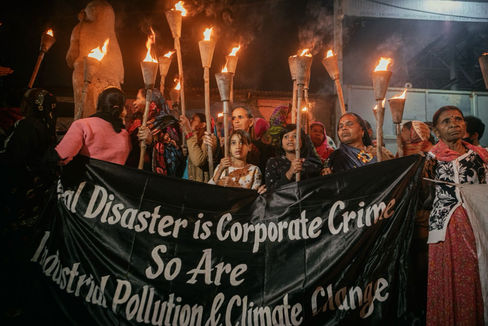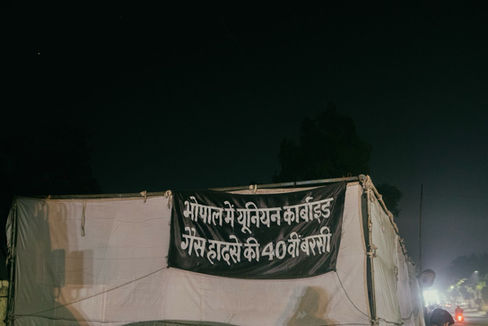Create Your First Project
Start adding your projects to your portfolio. Click on "Manage Projects" to get started
40 years later, Bhopal is still in crisis
Project type
Editorial, commissioned
Carrying a clipboard, Farhat Jahan, a community research worker, crisscrosses the narrow alleyways of Vijay Nagar—a locality in the central Indian city of Bhopal.
Just over 40 years ago, on a chilly December night, the world’s worst industrial disaster struck the residents of this neighborhood and those nearby. More than 500,000 people were exposed to a cloud of toxic gases that escaped from Union Carbide’s pesticide plant—about 2 km from Vijay Nagar—and wafted through dense settlements near the factory.
The accident was the result of a runaway reaction involving methyl isocyanate (MIC), which the company used to make carbamate pesticides. All safety systems for stopping such a leak were absent or out of order.
Thousands died within days of the disaster, and estimates suggest that about 20,000 people who had been exposed to the gases perished in subsequent years. Many of those who are still alive grapple with long-term health problems, particularly respiratory disorders.
People exposed to the toxic gases have reported pregnancy losses, irregular menstrual cycles and excessive menstrual bleeding, and premature menopause. A recent study suggested that men whose mothers had been exposed to the gases while pregnant with them were more likely to have a disability that affected their employment. These men also faced high risks of developing cancer by age 30.
But many activists say that government machination has hindered systematic investigations into persisting and emerging health problems linked to the accident. Amid lack of transparency, and often inaction, others have stepped up. “When you don’t have your own scientific agency generating data, or even when they are generating such data but hiding it, then you’re only left with the people doing this work,” says the Bhopal-based social activist Rachna Dhingra.















































